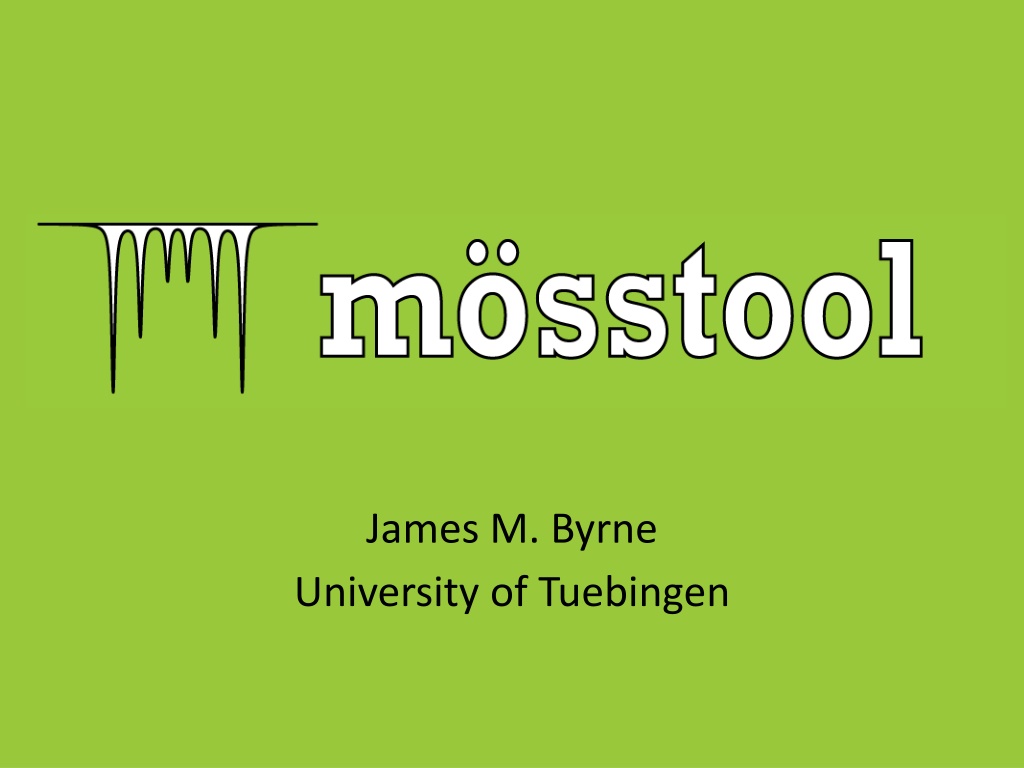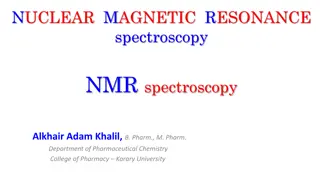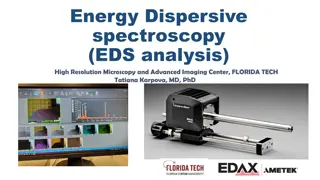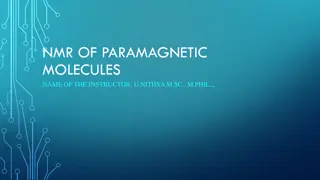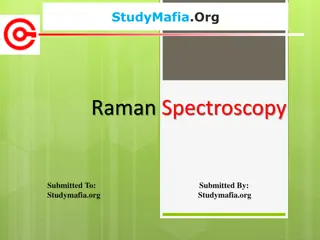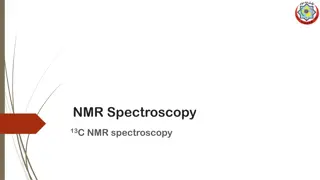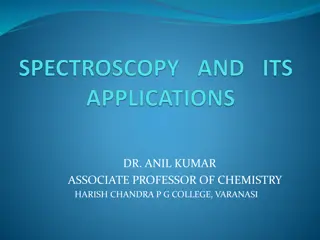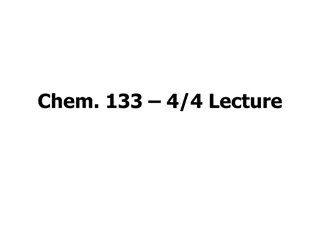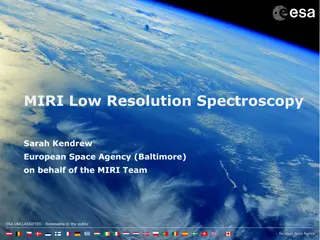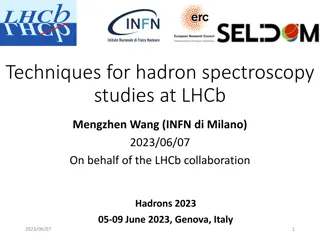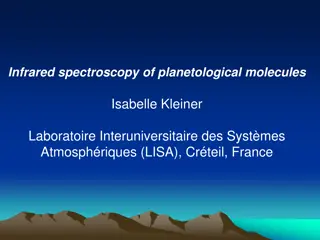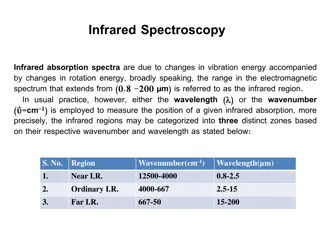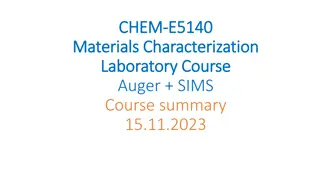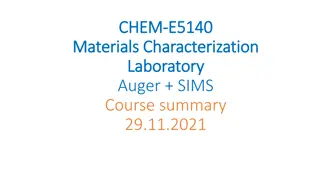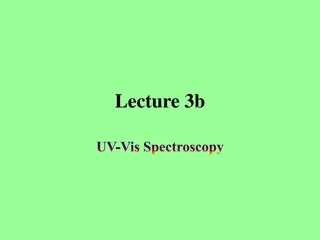Mössbauer Spectroscopy: Principles and Applications
Mössbauer Spectroscopy is a technique discovered by Rudolf Mössbauer in 1958, based on the recoilless emission and absorption of gamma radiation. It is used to identify minerals, determine redox states, quantify mineral abundancies, and assess crystallinity. The method involves analyzing typical spectra, fitting data using Lorentzian functions, and deriving parameters like center shifts. This analytical tool has been utilized in various fields, including studying iron compounds in lake sediments. The technique is powerful in providing detailed information through singlets, doublets, and sextets in the spectra, offering valuable insights into material properties.
Download Presentation

Please find below an Image/Link to download the presentation.
The content on the website is provided AS IS for your information and personal use only. It may not be sold, licensed, or shared on other websites without obtaining consent from the author. Download presentation by click this link. If you encounter any issues during the download, it is possible that the publisher has removed the file from their server.
E N D
Presentation Transcript
James M. Byrne University of Tuebingen
Mssbauer Spectroscopy - Basics Discovered by Rudolf M ssbauer 1958 Dependent upon recoil recoil- -less emission less emission and absorption of gamma radiation absorption of gamma radiation. Used to: Identify minerals Determine redox state Quantify relative abundancies of different minerals in a sample Determine crystallinity
Typical spectra Typically the data is described as: Singlet Doublet Sextet Technically speaking, the singlet, doublet and sextet use the same equation, but people often find it easier to describe them as being three distinct types of spectra
Typical spectra https://serc.carleton.edu/research_education/geochemsheets/ techniques/mossbauer.html
Parameters Coey J M D., 1974, Iron compounds in lake sediments
Singlet Velocity (mm/s) Velocity (mm/s) -4 -2 0 2 4 -4 -2 0 2 4 Raw data Raw data with a fitted line (Red) Fit the data using a Lorentzian function (Right figure). The red line in the fitted figure simply corresponds to this lorentzian line.
Singlet The Lorentzian lineshape equation is described by: 1 2 ? ? =1 (? ?0)2+(1 ? 2 )2 Velocity (mm/s) -4 -2 0 2 4 L(x)=Transmission x = velocity = Linewidth (usually 0.097) x0 = distance from center Transmission x0 x0 provides the most information and referred to as a Parameter which in this case would be referred to as center shift .
Doublet Velocity (mm/s) Velocity (mm/s) -12 -10 -8 -6 -4 -2 0 2 4 6 8 10 12 -12 -10 -8 -6 -4 -2 0 2 4 6 8 10 12 Raw data Raw data with a fitted line (Red) Sometimes the data consists of two lines which are joined together
Doublet For a doublet, the Lorentzian equation is just slightly modified: 1 2 1 2 1 ? 2 )2+1 ? ? = ? ?????+ ? ???? ?= (? ?01)2+(1 (? ?02)2+(1 2 )2 ? Velocity (mm/s) L(x)=Transmission x = velocity = Linewidth (usually 0.097) x01 = distance from centre for the left curve X02 = distance from centre for the right curve -12 -10 -8 -6 -4 -2 0 2 4 6 8 10 12 Transmission Here X01 and X02 contain the two most important parameters called center shift and quadrupole splitting Center shift = (x01 + x02)/2 Quadrupole splitting = x01+x02
Short Term Goals Develop an online data fitting tool where people can load M ssbauer data, fit the data and obtain the important information to interpret the data To make it easier for people to learn M ssbauer So we can increase the >100 groups using it to >1000
www.mosstool.com Go to the website now
What happens in the background? www.mosstool.com
Long Term Goals 1. Develop a general data analysis website where people using many different types of technique (not just M ssbauer) can upload their data and easily fit it. 2. Have a support system where researchers can get advice from community experts (like a webchat or forum) 3. Be able to easily identify a scientist who has expertise a certain technique and can do measurements for other external groups. www.mosstool.com
Future? Maybe we could have a front end where people can work with and teach all sorts of different type of online data fitting tools? www.mosstool.com
